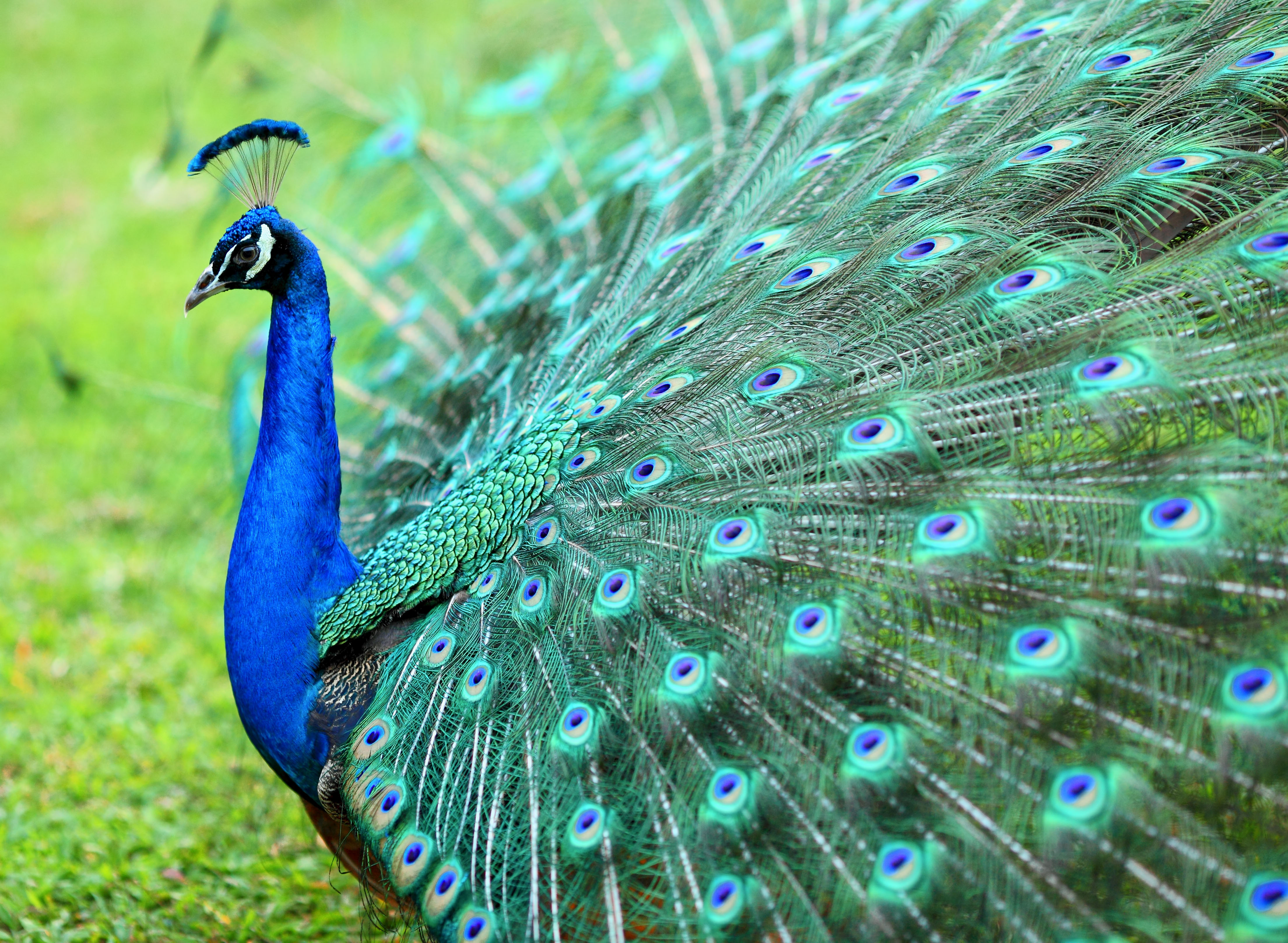Peacock, also called peafowl, is one of the showiest of all birds because of its great size and the beauty of its feathers. Technically, the word peacock refers only to the male peafowl. The female bird is called a peahen. However, most people use the term peacock for either sex.

The Indian or common peafowl is the best known of the three peafowl species. The male is about as large as a turkey. It has a vivid blue neck and breast, a metallic green back, and a long train of greenish feathers brilliantly marked with bold spots that look like eyes. These feathers grow from the lower back and not the tail. During courtship, the male bird spreads the train into a gorgeous fan as he parades slowly in front of the female. The female bird is smaller than the male and dull colored, and she has no train.
Indian peafowl live wild in India and Sri Lanka, and can be seen in city parks and on country estates. The dark green, broken coloration may be difficult to see in the midst of colorful tropical foliage. These birds eat snails, frogs, and insects, as well as grain, juicy grasses, and bulbs. They often destroy crops. Varieties with white plumage are sometimes found in captivity. The green “jungle” peafowl, found in Indonesia, Malaysia, and Myanmar, has a golden-green neck and breast. The Congo peafowl lives in Africa and lacks an ornate train.
Tame peacocks may be found in all parts of the world. The young cannot stand the changeable weather of temperate climates very well, and are hard to raise. The hen makes her nest in a protected spot on the ground. In captivity, she lays 10 or more brownish eggs. In the wild, peacocks lay only three to eight eggs.
Loading the player...Peacock
In ancient times, the peacock was carried to all parts of the world as a great treasure. During the reign of Solomon, “once in three years came the navy of Tharshish, bringing gold and silver, ivory, and apes, and peacocks” (I Kings 10: 22). The peacock is mentioned in The Birds, a play by Aristophanes, written in Greece during the 400’s B.C. Pliny speaks of it as common in his day in Rome, where the peacock was considered a great delicacy as a roast, served in its own feathers.
